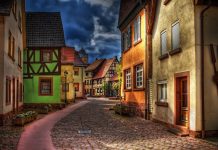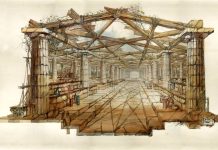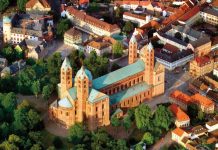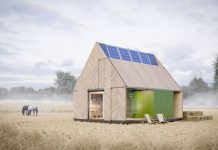You may be familiar with the term ‘organic’ from the produce aisle of your grocery store. When it comes to architecture, however, ‘organic’ means something very different. Organic architecture refers to designing and building structures and spaces that are balanced with their natural surroundings and tailored to the function they serve for their inhabitants. Organically designed structures seem to meld with the landscape or rise from it as if the surrounding spaces gave birth to them.
Organic architecture was about maintaining a philosophy which is;
The belief that a building should appear to grow easily from its site, also choosing one dominant form for a building and integrating that form throughout. However, using natural colors: “Go into the woods and field for color schemes”, in addition to, revealing the nature of materials opening up spaces and providing a place for natural foliage.
One of the most famous architects worldwide is Frank Lloyd Wright. This architect was interested in the relationship between buildings and their surrounding environments. He believed that a building should complement its environment so as to create a single, unified space that appears to “grow naturally” out of the ground. He also thought that a building should function like a cohesive organism, where each part of the design relates to the whole. Wright’s organic architecture often incorporates natural elements such as light, plants, and water into his designs. His color choices reflected the environment as well with yellows, oranges, and browns. His favorite accent color was red, which has importance both in nature and in the Japanese culture, which he studied and visited and admired.
Among the many famous structures Wright designed, two of the most celebrated are: Fallingwater – Wright’s most famous work, it uses natural stone and an existing mountain stream to blend habitation and nature. Unity Temple – Wright used straight lines and right angles to represent the city landscape while leaving the concrete surface uncovered. One of the most popular buildings is Falling Water (1935-38), Bear Run, Pennsylvania.
If we are talking about local architects who use organic architecture, no doubt, Hassan Fathy will be the first one who will always come to your mind. Hassan Fathy is arguably the most widely known and influential Egyptian architect of the 20th century. His major contributions were to so-called vernacular architecture which, inspired by traditional Nubian and Islamic materials and styles, urged an approach to the built environment that was economically and ecologically sustainable and responded to contextual needs of the individuals and communities for whom it was intended. By far the most respected expert in Vernacular Architecture, Architecture of the people, is Hassan Fathy. Hassan Fathy, an Egyptian architect saw the value of natural building long before it became popular in the west.
Egyptian architect Hassan Fathy died in 1989 but left behind a legacy of 160 building projects ranging from small projects to large-scale communities complete with mosques and schools.
Hassan Fathy is the most famous of the Egyptian Architects, who used traditional materials, means of construction, and vernacular styles in his search for an inexpensive form of architecture for the poor.
His projects are based on the use of a narrow range of forms made from morphological and structural elements taken from tradition: parabolic arches, square spaces covered with domes, rectangular rooms or narrow spaces with vaults, courts, balconies and wind towers (Fantone 2003).Both for the value he attributed to manual work, and for economical and ideological reasons, he resorts, to traditional techniques that drastically reduce the use of machinery and exploit materials that are readily and cheaply available: earth, straw, manual labour, stones.
The brick is, in fact, the only material used in his works. The supporting walls are made either of sundried bricks made of mud and reinforced with straw (adobe), or of local stones, or fired bricks. He built New Gourna in Luxor Egypt which was one of the highlights of Hassan Fathy’s history.
Finally, Hassan Fathy respected that nature should take precedence in the design of new structures. “Architectural form should consider the forces in nature of wind, rain, even how an earthquake shaking it would make it fall in a pattern that follows the geological formation of a mountain,” he once wrote.



















